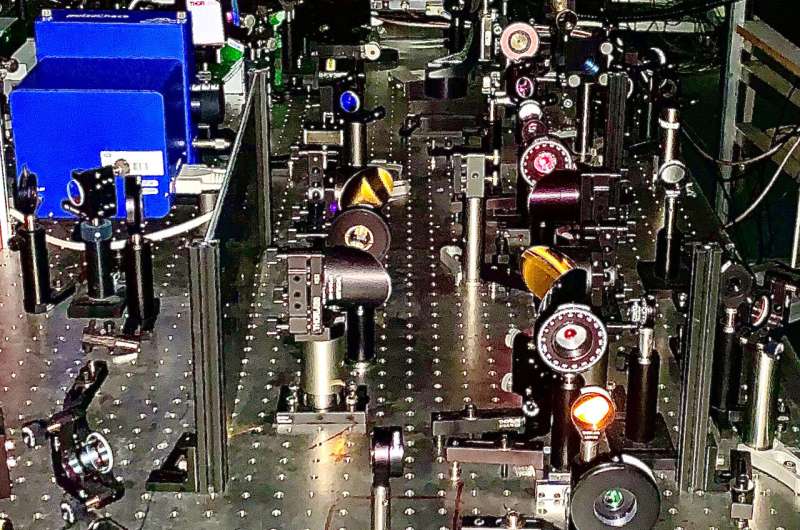This article has been reviewed according to Science X's editorial process and policies. Editors have highlighted the following attributes while ensuring the content's credibility:
fact-checked
peer-reviewed publication
trusted source
proofread
Solar hydrogen: Barriers for charge transport in metal oxides

In the future, climate-neutral hydrogen will play an important role as a fuel and raw material. Hydrogen is produced by electrolysis of water, either using an indirect approach in which an external energy source (solar panel or wind turbine) supplies the electrolysis cell with voltage, or using a direct approach: a photoelectrochemical cell in which the photoelectrode itself supplies the electrical energy for electrolysis (PEC cell). This direct approach would have some advantages, but is not yet competitive.
So far, this is mainly due to a lack of good photoelectrodes. Metal oxides are considered suitable in principle; they are inexpensive, non-toxic, stable in aqueous solution and also often possess catalytic properties that can accelerate the desired chemical reaction. Sunlight releases charge carriers in metal oxides, thus generating an electrical voltage.
But compared to doped semiconductors such as silicon, these charge carriers are not very mobile, they are rather slow, or immediately settle back into the lattice and localize. This is due to various mechanisms on different time and length scales which are still poorly understood.
In the femtosecond laser laboratory at HZB, the team led by Dr. Dennis Friedrich and Dr. Hannes Hempel has now investigated in detail for the first time what limits the conductivity of metal oxides. "We wanted to find out how strongly charge carriers are localized and how this reduces their mobility at different times," says Markus Schleuning, first author of the study, who did his doctorate on this topic. The work is published in the journal Advanced Functional Materials.
"First, we developed a new method to determine the diffusion lengths. The simple equation can also be applied to other classes of materials such as halide perovskites or silicon," explains Hempel.
"Then we found out that this does not work for certain materials, and precisely when the charge carriers are located," adds Friedrich.
In the femtosecond laboratory, all samples are investigated with both a terahertz method (OPTP) and microwave spectroscopy (TRMC), both measurement methods initially provide information on the mobility and lifetime of the charge carriers—but on different time scales.
The results can be very different, indicating that the carriers have been localized in the meantime. From ultrafast processes in the range of 100 femtoseconds to slower processes lasting 100 microseconds, the team was able to determine the dynamics of charge carriers in the materials. By way of comparison, extrapolated to our human perception of time, this would correspond to changes in time spans of one second to 31 years.
The physicists used this combination of methods to analyze 10 metal oxide compounds, including Fe2O3, CuFeO2, α-SnWO4, BaSnO3 and CuBi2O4. For all materials, the mobilities were very low compared to conventional semiconductors. A heat treatment, annealing, significantly improved the mobility in BaSnO3.
The best performer was the well-known bismuth vanadate (BiVO4), which shows little carrier localization on the length scales studied. The study shows how metal oxide compounds can be characterized to identify and develop the best materials for photoelectrodes.
More information: Markus Schleuning et al, Carrier Localization on the Nanometer‐Scale limits Transport in Metal Oxide Photoabsorbers, Advanced Functional Materials (2023). DOI: 10.1002/adfm.202300065


















